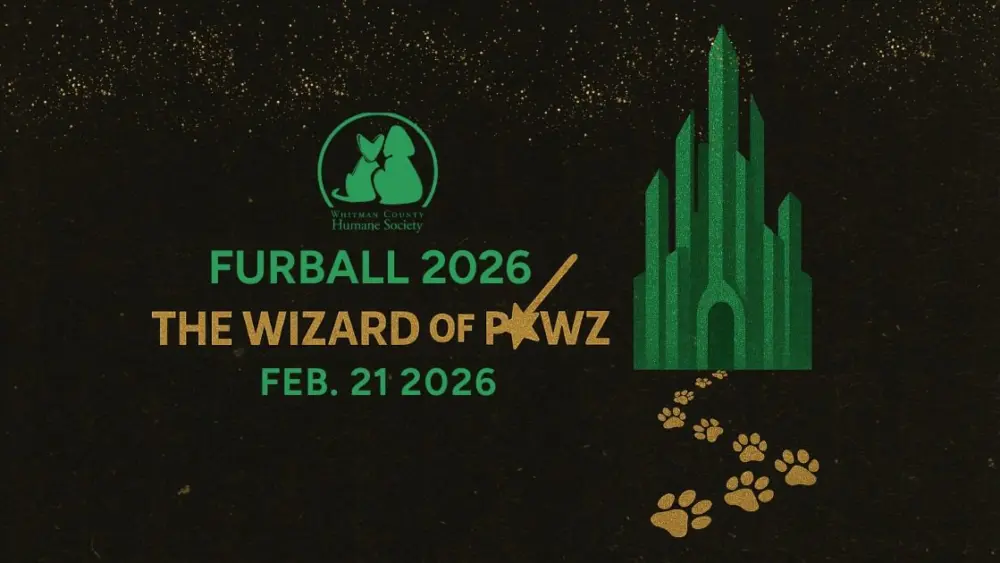Video offers solutions for helping wildlife access habitat in Washington
YAKIMA – The Washington Department of Fish and Wildlife (WDFW) and Conservation Northwest are hosting a virtual show-and-tell about a new video focusing on wildlife connectivity “Wild Ways – Why Keeping Washington’s Habitat Connected Matters” on Feb. 1 from 6-7 p.m. Members of the public are invited and encouraged to bring questions and ideas for a moderated discussion with a panel of scientists.
“Protection of habitat connections is critical as Washington’s human population grows rapidly, said Mike Livingston, WDFW Region 3 Director. “This educational and inspiring video gives viewers hope and a path forward for helping wildlife access their habitats.”
Habitat connectivity ensures wildlife can access areas they need to go to find food, mates, and resources to survive environmental changes and thrive. Connectivity supports natural processes such as seed dispersal and nutrient cycling, or the movement of natural materials.
“We need to find a way to coexist together so that wildlife can move freely once again through the landscape, says Melissa Speeg, a local conservationist featured in the video. “We can all make a difference in wildlife connectivity.”
Wildlife habitat becomes disconnected when land is developed for a variety of uses. Wildlife avoid areas with housing, roads, and businesses. When development creates barriers keeping wildlife from accessing important habitat it can result in tragedy: we lose both wildlife and natural lands. Climate changes can magnify the problem; wildlife moves to habitats with climates they are adapted to in an attempt to escape wildfires and other disasters.
“The real way to know that we’ve achieved our goal is that our planning processes include wildlife connectivity at the very beginning,” said Brian Stewart, Program Manager for Conservation Northwest.
Wild Ways, produced by Ted Grudowski and Darrin Gunkel, along with WDFW and Conservation Northwest, features staff from WDFW, Washington State Department of Transportation (WSDOT), local conservationists, and Conservation Northwest. Participants can join this live event via Zoom.
It highlights examples of successful habitat connectivity such as the Interstate 90 wildlife crossing project that enables wildlife to access the habitats they need while allowing human use of the land.
Habitat connectivity is also important for safety and economics. The estimated number of mule deer killed annually on state highways is approximately half of what hunters harvest annually. Wildlife crossing structures like the ones on Interstate 90 substantially reduce wildlife-vehicle collisions on Washington highways. Rough economic impact estimates (vehicle repairs, injuries, road closures) of deer and elk collisions in Washington combined are upwards of $300 million annually.
WDFW, Conservation Northwest, and WSDOT are developing a state Habitat Connectivity Action Plan to identify priority locations that need protection, restoration, and connectivity. WDFW also advocates for habitat connectivity in technical reviews of plans by other agencies, prioritizes connectivity in wildlife area management, collects data, develops maps, and provides guidance and expertise for land use planners, local governments, and others to identify areas causing a barrier to animal movement, or areas that help promote wildlife movement.
The Washington Department of Fish and Wildlife works to preserve, protect, and perpetuate fish, wildlife and ecosystems while providing sustainable fish and wildlife recreational and commercial opportunities.
“Protection of habitat connections is critical as Washington’s human population grows rapidly, said Mike Livingston, WDFW Region 3 Director. “This educational and inspiring video gives viewers hope and a path forward for helping wildlife access their habitats.”
Habitat connectivity ensures wildlife can access areas they need to go to find food, mates, and resources to survive environmental changes and thrive. Connectivity supports natural processes such as seed dispersal and nutrient cycling, or the movement of natural materials.
“We need to find a way to coexist together so that wildlife can move freely once again through the landscape, says Melissa Speeg, a local conservationist featured in the video. “We can all make a difference in wildlife connectivity.”
Wildlife habitat becomes disconnected when land is developed for a variety of uses. Wildlife avoid areas with housing, roads, and businesses. When development creates barriers keeping wildlife from accessing important habitat it can result in tragedy: we lose both wildlife and natural lands. Climate changes can magnify the problem; wildlife moves to habitats with climates they are adapted to in an attempt to escape wildfires and other disasters.
“The real way to know that we’ve achieved our goal is that our planning processes include wildlife connectivity at the very beginning,” said Brian Stewart, Program Manager for Conservation Northwest.
Wild Ways, produced by Ted Grudowski and Darrin Gunkel, along with WDFW and Conservation Northwest, features staff from WDFW, Washington State Department of Transportation (WSDOT), local conservationists, and Conservation Northwest. Participants can join this live event via Zoom.
It highlights examples of successful habitat connectivity such as the Interstate 90 wildlife crossing project that enables wildlife to access the habitats they need while allowing human use of the land.
Habitat connectivity is also important for safety and economics. The estimated number of mule deer killed annually on state highways is approximately half of what hunters harvest annually. Wildlife crossing structures like the ones on Interstate 90 substantially reduce wildlife-vehicle collisions on Washington highways. Rough economic impact estimates (vehicle repairs, injuries, road closures) of deer and elk collisions in Washington combined are upwards of $300 million annually.
WDFW, Conservation Northwest, and WSDOT are developing a state Habitat Connectivity Action Plan to identify priority locations that need protection, restoration, and connectivity. WDFW also advocates for habitat connectivity in technical reviews of plans by other agencies, prioritizes connectivity in wildlife area management, collects data, develops maps, and provides guidance and expertise for land use planners, local governments, and others to identify areas causing a barrier to animal movement, or areas that help promote wildlife movement.
The Washington Department of Fish and Wildlife works to preserve, protect, and perpetuate fish, wildlife and ecosystems while providing sustainable fish and wildlife recreational and commercial opportunities.



